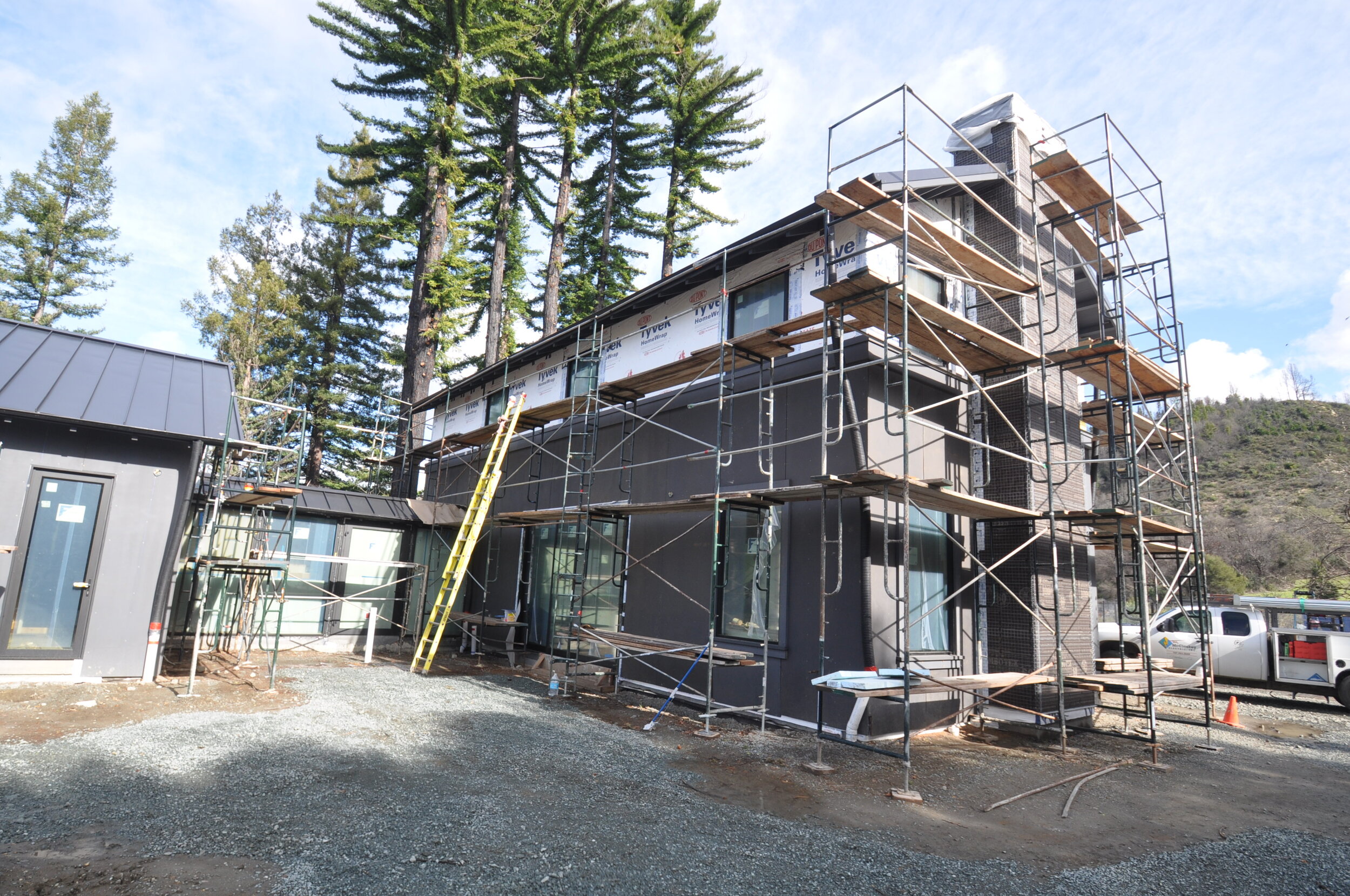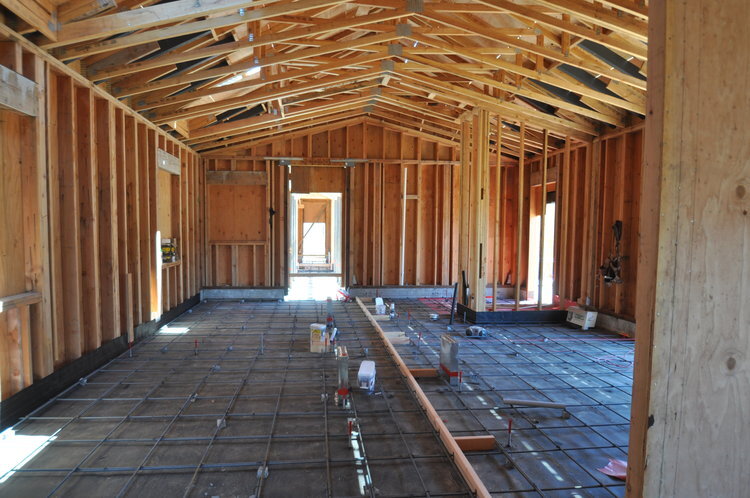How to Get a Building Permit Approved in the San Francisco Bay Area
When you are ready to remodel your home (or build something completely new), it takes quite a few steps to go from your initial vision to the final result.
Securing a building permit may not be as sexy as designing your new addition, but it is absolutely crucial to research and learn about the system. As a licensed architect for over a decade, Craig has successfully problem solved and navigated this process hundreds of times in San Francisco and other Bay Area cities and counties from the Peninsula to the North Bay. Below he answers frequently asked questions about permitting in San Francisco and the surrounding Bay Area.
Craig designed a remodel for this Victorian home in San Francisco, originally built in the 1900s.
"The permit process is in place so that someone’s overseeing and checking that the work is safe. I often relate it to Public Health for building.”
Do I need a permit?
Yes – with very few exceptions for your renovation or build to be legal, you must get a building permit, even if it’s a small project and especially in San Francisco. If you start demo or construction without a permit and get caught, you’ll be required to get one, and the fines are often double what you would have originally paid. Further, you may be forced to tear out work and start over. And you could face difficulty selling your home in the future.
“In dense areas such as San Francisco, most likely a neighbor or passerby will hear or see you doing work and report you. And if a building official happens to be passing by, you can get heavily fined,” says Craig.
What is the approval process for getting a permit?
“The process of going in for a building permit and getting it reviewed and approved is often complicated and time-consuming,” says Craig. “I hate to say it like that, because it sometimes dissuades people, but the fact of the matter is, there’s so much construction going on right now in the Bay Area and the building departments (many of which are understaffed) have a queue of projects to review. Plus, there are a lot of code requirements for earthquakes, fires and other safety reasons. But that is why architects have to complete a rigorous and thorough licensing process.”
Craig's approved permit drawings for a Victorian home remodel in San Francisco.
The process Craig uses to acquire a permit always involves initial research about the property and building codes related to the house. Utilizing that information, he will present schematic design options to the client. From there, the design evolves into one clear path. Next, Craig and the clients will work with a GC to establish a construction budget. From there, Craig and his team prepare and submit all the required documents and drawings to the building department. For larger projects and if you are removing a load-bearing wall or adding an addition, structural engineering drawings and calculations from a licensed engineer are required as part of the permit submittal. For smaller projects, like a kitchen and bathroom, you can do an over-the-counter (OTC) review, which can be pretty seamless. But for bigger projects, there’s a time-consuming and complicated intake process that involves meetings, neighborhood reviews, strict energy and safety requirements and style guidelines (for both renovations and new builds).
How long does it take to get a permit?
This depends on the scope of the project. After a full intake process for larger projects, the department reviews it internally and lately some Bay Area cities and counties have been sending it out to a third party plan checker to review, so it can take even longer. For smaller builds, such as kitchens and bathrooms, it can be as quick as three to four weeks. Much bigger projects, such as an entire house, can take two-to three years in the design, permitting and build (the permit process is usually a year of that).
“For a long time in San Francisco I was able to get permits pretty quickly, easily and seamlessly,” says Craig. “But the process is taking longer than it used to. I’ve had to adjust and build in adequate time for coordination with permit officials, making adjustments based on feedback and securing approvals,."
Craig designed this Calistoga modern farmhouse on a property that was overcome by the Tubbs fire.
How much does it cost to get a permit?
The cost varies depending on the scope of the project.
“It's important to work with an architect and a GC to establish a construction budget at the beginning of the project, because the permit cost is related to your overall budget. For example, let’s say you want to build two bathrooms and a kitchen and your budget is around $150,000. Having the budget is helpful in planning for the estimated costs of the permit. Permit fees for my projects usually range from $10-$30,000 depending on scope and location of jurisdiction. Part of the cost includes school and road fees to help improve our surrounding infrastructure.
It’s important to get in touch with an architect first, as I’d often get calls from builders saying they went out to look at a job and that the client clearly needed drawings."
Calistoga modern farmhouse under construction.
An insider’s secret to permitting
Expert tip: It’s crucial and highly beneficial for you to research the history of the home when starting a project. "If you bought an old house in San Francisco and want to make renovations, it will do you a world of good to look at the history of what was built and when – was there a bathroom added that wasn’t permitted? Perhaps you live in a house that your grandfather lived in, and he made changes without reporting it. The more you know, the better when trying to secure a permit. If you can’t get this information on your own, you can go to the Building Departments’ research floor, where they have records as old as hand-written ones! You can also visit https://sfgov.org/services/sf-property-information to find archives of data just by entering in the address. For Marin County, you can visit https://www.marincounty.org/depts/cd/property-information. "
"Another tip is scheduling a 'pre-application' with the building department. During this meeting, you can present information on your property and rough schematic designs and get feedback from a planner on what they would be more likely to approve. I always take detailed notes during these meetings and share via email with all parties involved for future reference. A pre-application meeting is important if you have a property of historic significance or if you want to do something architecturally unique, such as a glass room addition."
Trend: Keeping that Old Building Feel
“There’s a big movement to keep historical context in place,” says Craig. "Because of the density in the Bay Area, more people are remodeling vs. building new. And many want to rip places apart and re-do them. I think Bay Area communities are becoming sensitive to retaining certain parts of buildings, such as the front façade, which I think is aesthetically important – this way we don’t end up in urban boxes."
"This trend is also contributing to a longer permitting process. Building departments are truly making people stop and do more research, and in San Francisco it can be a pretty involved process at the moment,."
Do permits get denied?
"I’ve never had a permit get completely denied by a building department. That being said, I have had some issued with HOA associations causing major delays. But in my case, all permits get approved eventually – I just work with the owners and planners to incorporate the changes until it is approved. I believe that a design solution can be found that satisfies almost any set of requirements, even when some appear to be in conflict. This is why it’s so crucial to have an architect to help you during this time to problem solve and find solutions,” says Craig.
If you are desiring to design or build new for your home or business, contact Craig for a consultation at info@craig-oconnell.com and follow us on Instagram at craigoconnellarchitecture.
.
[J1]Everywhere or SF?




